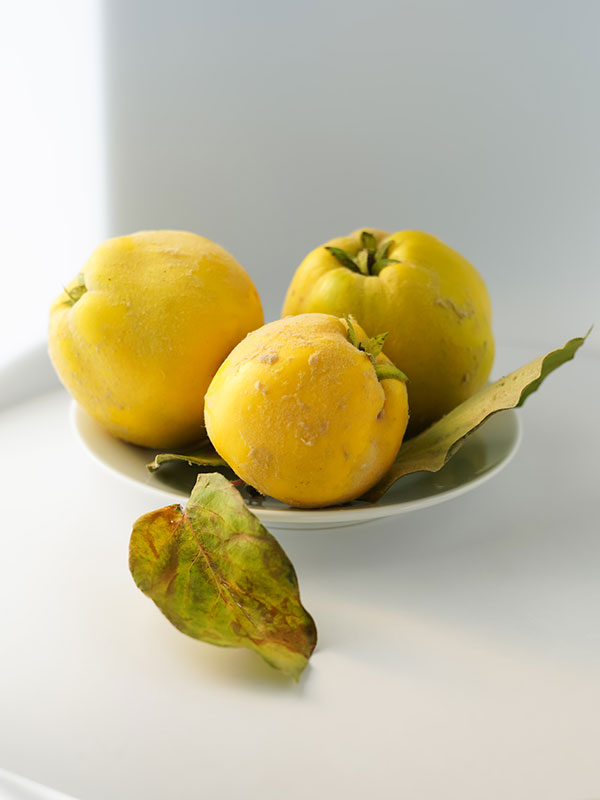Bitter Quince
In the summer 2018, I hated the quince tree in my front garden. And I mean, properly detested it. I would look out of my study window and stare at it with such loathing that I thought my evil thoughts would singe the leaves, blacken the trunk and set the whole bloody thing alight, the fruits exploding like fireworks.
That summer, I was dealing with work stress and was going through the agonising experience of watching a loved one struggle with illness and then die. I simultaneously chose and moved into a new house in a tense rush. As I signed the paperwork for the sale, I was like one of those brides who walk down the aisle knowing their marriage is a massive mistake, but still mumble ‘I do’, when their whole being is screaming ‘I so don’t’. And from the second I stepped over the threshold, I haaaated that house. I discovered that the bushy tree in the front garden was a quince tree. And as I marinated in grief and work worries, I focussed all my spite on the blameless quince tree and stared daggers at it every day as I worked in my study.
Over the next months, tiny green quinces festooned the foliage and then swelled into a big fat yellow crop. One morning I plucked one of the beautiful fragrant produce and bit into it. Lordy! My face sneered, my shoulders hunched and I spat the putrid granular flesh onto the path in front of me. How could a fruit that looked so beautiful, lush and fecund, taste so disgusting?
I started writing about how much I hated those fat quinces and then about a woman called Hannah who hated quinces because she felt like they reflected her chaos: attractive on the outside but stunted and seized on the inside. My loathing of quince flooded the book via my heroine who hated it and yet gorged on it as she struggled with being the spitting image of her beautiful mother – who was murdered at her exact age.
Gradually, as I wrote the book, I came out of my funk and decided to try to embrace those nasty quinces in my garden. I researched online. There were internet sites for quince growers, quince history and mythology sites, even sites referring to quince lovers! How could anyone seriously LOVE quince? I discovered that some people think that it was a quince that Eve bit into in the Garden of Eden – not an apple, as they weren’t indigenous in the correct area at the time – and if so, I can totally see why the vile taste of a raw quince destroyed Eve’s innocence! I discovered that while quince tastes awful raw, it can be cooked in all sorts of amazing ways. The most well-known use is in jam, but there are so many others: baked with pork masala, in quince and almond cake and in bay and quince cordial.

I was going to call my novel ‘Bitter Quince’ but I realised that, like me before I moved into my hated house, some people wouldn’t know what quince were. As if to prove the point, when I found an agent and publisher and sat down to lunch with them both, I brought along some quince from my garden and plonked them on the table, and the lovely waitress pointed at them and said ‘what on earth are they?’ So I changed the title to ‘The Daughter’ as Hannah is the very centre of the book.
I started cooking with quince. Here are some quince recipes I’ve tried:
https://www.bbcgoodfood.com/recipes/collection/quince-recipes
I’m very grateful to that poor blameless quince tree, which was such a useful focus for all my tension for so many months and helped me write a novel. I’ve finally come to like my house and become a quince convert – my cupboard is now stacked with jars of delicate pink quince jam.
